There downy mildew of the vine is the leader among the diseases affecting this plant. It mostly damages the work of winegrowers in the regions of central and northern Italy, but does not spare the rows in the south, in very rainy periods.
It is a well-known and feared plant disease, since, if its onset is not avoided, it can compromise part of the year’s grape harvest.
Italian viticulture already suffers from many problems, one above all climate change. This, with late spring frosts, every year worries all operators in the sector.
It is therefore important to act on known diseases and prevent them, such as the downy mildew of the vine.
In this article we will see what are the conditions that favor this disease. In addition, we will show the prevention and defense strategy of plants, using only products allowed in organic farming.
The Plasmopara viticola
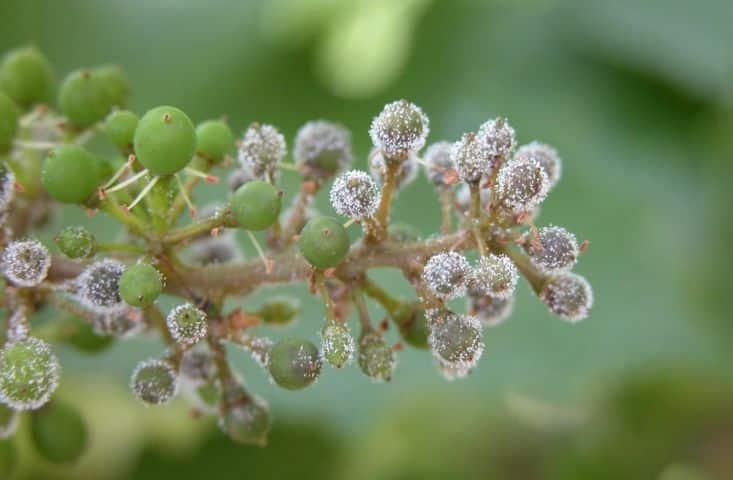
Plasmopara viticola it is the pathogen of downy mildew of the vine. Its appearance occurs in the second half of the 19th century. It comes after the import in Europe of American vines with phyto-pathological problems, with the aim of dealing with the phylloxera of the vine, caused by a harmful phytomizo insect.
To date, downy mildew is the main cryptogamic disease of the plant of Vitis vinifera. Its attack can result in up to 100% production loss. However, such extensive damage can occur only when the conditions suitable for the proliferation of the pathogen are revealed and measures are not taken to prevent its appearance and / or counter its advance.
However, in general, the average losses for wine production are around 20 – 25%, between direct and indirect ones. By indirect losses we mean the costs of cultivation operations aimed at counteracting the progression of the disease.
The damage of downy mildew to the vine plant
The downy mildew of the vine gives rise to serious infections which mostly affect the epigeal part of the plant, that is the aerial part. In fact, leaves, bunches, shoots and berries are affected.
In order to recognize the disease, in general, it is necessary to pay attention to the symptoms present on the vine.
Symptoms on the leaves
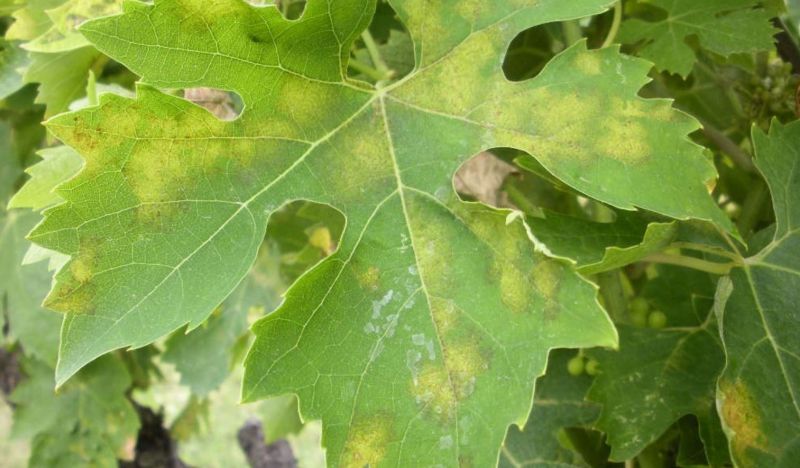
Leaves are the most susceptible plant organs to disease. On them there are primarily chlorotic stains, similar to oil stains, on the upper page. These are followed, in the next 2 or 3 days, by a white crystalline mold on the underside. The yellowish chlorotic spots then become necrotic, brown in color. This causes the photosynthetic tissue available to the vine to be reduced. In severe cases, the plant sheds its leaves and the phylloptosis. This leads to decreases in terms of quality and quantity of production.
The susceptibility of the leaves depends on their age: they are sensitive starting from about 3 cm in diameter until they are old. In late summer, a possible infection could then occur, that is, the mosaic downy mildew.
Symptoms on the shoots
Infected young and herbaceous shoots are affected by unilateral hypertrophy. Then they fold into a hook or S and the mold is visible.
In the developed shoots, however, the attack is limited to the nodes.
Symptoms on the bunches
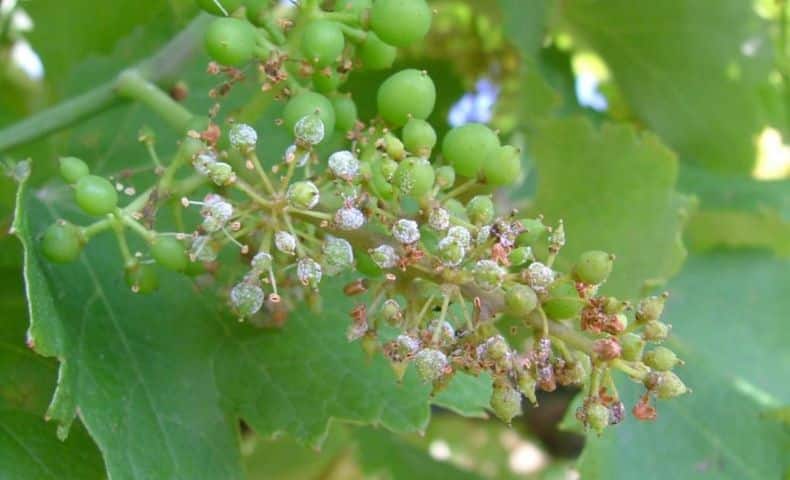
On the clusters, before fruit set, there will be evident livid spots and hypertrophy of the rachis. Following this, the cluster will take on an S shape.
The berries can dry out at first and then fall off.
After fruit set, two alternative syndromes occur: one in spring on young clusters, that is the white rot (or gray or “blatant” form); and one in summer, far from flowering, namely the brown rot (or “larvae” form).
Favorable conditions for vine blight
There Plasmopara viticola it overwinters in the ground. In spring, if temperatures above 10 ° C are recorded, it gives rise to the inoculum responsible for the primary infection. The first attacks occur between May and June.
The inoculum is transported from the soil to the female or sui vine shoots not pruned. The transport takes place by rain splashes or insects.
Penetration occurs through the stomata and it is necessary that the plant tissues be covered by a veil of water for a certain number of hours which can be calculated empirically. To do this, simply divide the value of 50 by the temperature recorded during the period, as long as it is between 6 and 25 ° C (you get from 2 to 8 hours).
The conditions for primary infection to occur can be summarized with the “three tens rule”, that is:
- temperature above 10 ° C, in particular the optimum is between 18 ° and 22 ° C
- the length of the shoots must be more than 8-10 cm
- there must have been at least 10mm of rain within the previous 48 hours
Other stages of the disease
At the stage of penetration follows that of incubation within affected plant tissues, which can last from 4 to 15 days. This is visible through the appearance of oil stains and a white mold. It generally occurs after 4 hours of darkness, with optimum temperatures between 18-22 ° C. Relative humidity must exceed 95-98%. The time taken is between 7-11 hours.
Later, the sporulation, which gives rise to any secondary infections that can last until September or October. These require leaf wetness and optimal temperatures between 20 ° and 25 ° C.
How to prevent vine blight
To avoid virulent attacks of downy mildew of the vine, agronomic prevention is the most effective tool to adopt.
However, it is the most complex one, because it requires attention to uncertain climatic conditions, which change rapidly. Furthermore, one must also look after the phenological stage of the plant and the specific variety used.
To prevent the disease, however, since it attacks the herbaceous parts of the plant, it is first of all good to act:
- limiting the supply of nitrogen (N) to the real need of the plant. Therefore, avoid exceeding, giving rise to vegetative growth;
- eliminating the sissies, that is, the young shoots at the base of the stems. These are easy to reach for inoculations.
- containing moisture.
Contain moisture
As regards the containment of humidity, it is necessary to:
- adopt training forms that allow effective ventilation of the rows, such as Guyot or spurred cordon;
- eliminate stagnant water;
- manage the land with thegrassinga technique that avoids the movements of water, even in the form of splashes.
Pruning
Pruning is also necessary to prevent vine blight. Specifically, it is necessary to act with:
- late summer or autumn pruning, with green operations;
- elimination of all plant material that could host the fungus before and during wintering;
- the use of varieties e rootstocks resistant.
Biological fight against downy mildew of the vine
The main element used for remedy the downy mildew of the vine is copper. It is the only product capable of carrying out a real anticryptogamic action, even if only in a preventive way. Only in this way can the penetration of the pathogen into plant tissues be avoided.
Copper lends itself to covering treatments, but it has little persistence and it is easy to dilute with the rains. For this reason, it must be said that the interventions must have a good frequency, but contained doses.
Furthermore, the vine produces new leaves every week (the number varies according to environmental, varietal and nutritional parameters). For this reason, the vegetation can sometimes be not completely protected by the sprayed copper. It is therefore not advisable to wait to administer copper every week with large calendar treatments. Better to target interventions only where and when they are needed.
Generally speaking, the faster the growth rate, the shorter the interval between one treatment and the next. However, we reiterate, we must consider the data relating to temperature and humidity available. There is never a single recipe for every situation.
How to do copper treatments
It is important to structure a coverage plan, which is necessary when the conditions for the onset of primary infection are met. This must include interventions distributed throughout the period between May / June and August.
The doses, in years with an average presence of the pathogen, are about 200 g / ha.
Doses of 400 g / ha of metallic copper are the maximum recommended in the presence of serious epidemics.
In summer, the dosage can be reduced, up to even 100 g / hectare.
The dose to be used also depends on the phenological phase. That maximum is desirable in the most receptive phases to the disease, ranging from pre-flowering to post-setting. It is then possible to reduce the dosage during the growth of the berries.
Copper can be used in different forms, but with an eye to the maximum quantity per hectare at which it is possible resort by law. This is equal to 28 kg / ha over 7 years.
Vine treatment with Bordeaux mixture
To combat the downy mildew of the vine, the Bordeaux mixture. In order to comply with the maximum limits of use imposed by law, the Bordeaux mixture is being replaced with equally effective products, but with less impact, given the lower quantity of copper inside them.
Other products against downy mildew of the vine
In addition to Bordeaux mixture, other cupric compounds can be used. In particular:
- copper hydroxide
- copper oxychloride
- copper sulfate
- copper peptidate
- copper gluconate
- copper heel
- copper chloride
They all have different efficacy, persistence (always scarce) and quantity in copper.
When using them, always refer to the information on the product labels. In any case, always use personal protective equipment, such as gloves, overalls and protective mask.
Warnings on the use of copper in agriculture
We also remember that copper is a heavy metal. It is precious in organic farming (and not), but it must be used sparingly, since, if in excess, it becomes phytotoxic.
It accumulates and remains in the soils, absorbed and immobilized by colloids and by organic substance. Here it interferes with the organisms present, such as bacteria, fungi and earthworms.
There is therefore a reduction in mineralization and a scarce availability of nutrients for plants.
Alternatives to copper
In recent years, particular attention has been paid to the development of copper-free compounds. However, none of these have ever shown efficacy proven by long field trials.
Let’s talk about products such as: sodium bicarbonate and potassium, mineral oils, chitosan, propolis etc.
The correct use of each of the aforementioned formulations provides a valid support for the fight against downy mildew of the vine. But none of them is as effective as the implementation of the agronomic measures mentioned above, which prevent the infection from occurring.
article by Eufrasia Zazzarino

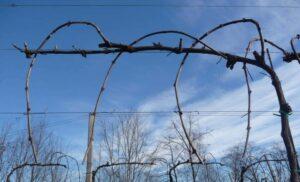
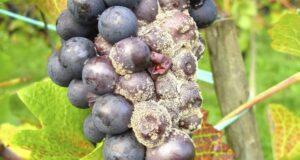
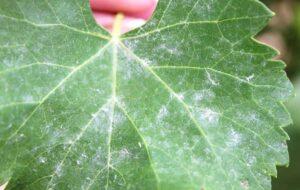
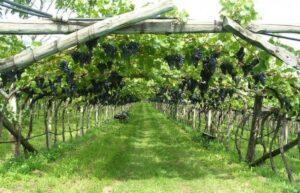
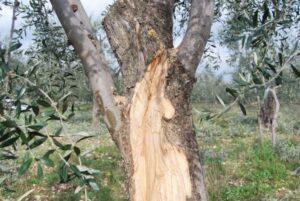
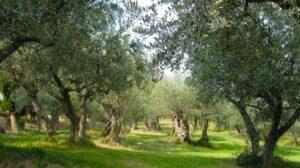
Start a new Thread